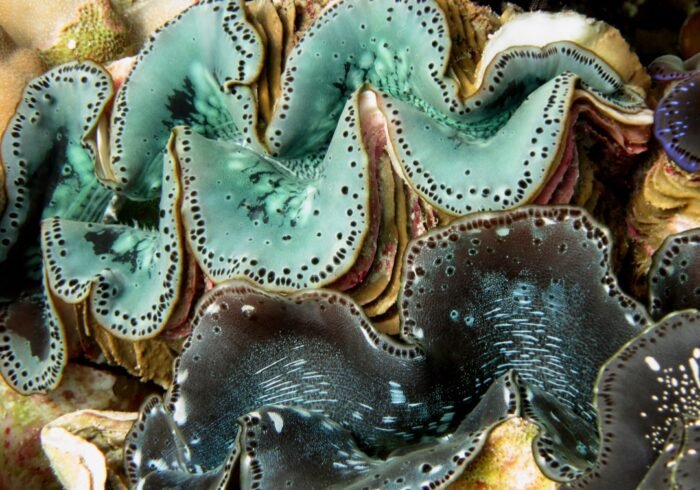The Gentle Giants of the Sea: An Understanding of Manatees and Their Conservation Sometimes lovingly called “sea cows,” manatees are large, gentle marine mammals that live in rivers and warm coastal waters. These slow-moving, herbivorous animals, which mostly eat seagrass and aquatic plants, are members of the Sirenia order, which also includes dugongs. One of the largest marine mammals, manatees can reach lengths of 13 feet and weights of 1,300 pounds. Despite their size, they can move through their aquatic environments with surprising grace thanks to their round bodies, paddle-like flippers, & flat tails. In many places, these amazing animals have great cultural significance in addition to being essential components of their ecosystems.
Key Takeaways
- Manatees are large, gentle marine mammals found in coastal areas and rivers of the Caribbean, Gulf of Mexico, and West Africa.
- Threats to manatees include habitat loss, boat strikes, pollution, and climate change, leading to a decline in their population.
- Conservation efforts for manatees include habitat protection, boating regulations, rescue and rehabilitation programs, and public awareness and education.
- Habitat protection is crucial for manatees, as it ensures the preservation of their feeding and breeding grounds.
- Boating regulations, such as speed limits and designated manatee zones, help reduce the risk of boat strikes and protect manatees in their habitats.
Being the epitome of the beauty of marine life, manatees are frequently regarded as representations of peace and tenacity. They help maintain the health of seagrass beds, which are vital habitats for many marine species, in coastal waters. The survival of manatees is threatened by a number of issues, despite their gentle nature and ecological importance. Manatees face numerous threats to their survival, both natural & man-made. Loss of habitat as a result of pollution and coastal development is among the most urgent threats.
Manatees lose their access to vital feeding and breeding grounds as urban areas grow. This problem is made worse by industrial waste and agricultural runoff, which degrades the quality of the water & causes toxic algal blooms that can suffocate seagrass beds and reduce the amount of food available to these gentle giants. Manatee mortality has increased due to boat strikes, which pose a threat to the species in addition to habitat loss. Collisions become considerably more likely in coastal areas as commercial shipping & recreational boating grow. Manatees, many of which are difficult to spot in the water, may suffer serious injuries or even die as a result of these mishaps. Also, the distribution of seagrass and other essential habitats is impacted by changes in water temperatures and salinity levels brought on by climate change.
Numerous groups & governmental organizations have launched extensive conservation initiatives to save manatees because they recognize how urgently these marine mammals need to be protected. The U. S.
| Conservation Efforts | Metrics |
|---|---|
| Protected Areas | 100,000 acres of manatee habitat protected |
| Boat Speed Zones | 500 miles of waterways with reduced speed limits |
| Rescue and Rehabilitation | 100 manatees rescued and rehabilitated annually |
| Research | 50 scientific studies conducted annually |
The Endangered Species Act, which establishes a legal framework for their protection, has classified manatees as a threatened species by the US Fish and Wildlife Service (USFWS). Increased financing for studies, habitat restoration initiatives, and public awareness campaigns has resulted from this designation. Numerous non-profit organizations actively participate in manatee conservation in addition to federal initiatives. These organizations put forth endless effort to keep an eye on manatee populations, study their ecology and behavior, and push for laws that will help protect them. In order to increase the resilience of manatee populations, successful breeding programs and habitat restoration projects have been the outcome of cooperative efforts between governmental entities and conservation organizations.
Manatees’ long-term survival depends on the preservation of the habitats in which they live. Marine protected areas (MPAs) are created to protect these ecosystems by limiting destructive practices like industrial development and commercial fishing. These areas are safe havens where manatees can rest, feed, & breed without worrying about human interference. Initiatives for habitat restoration are also essential for improving the condition of seagrass beds and other important ecosystems. Invasive species removal, native vegetation replanting, and pollution control techniques are common components of restoration projects. For manatees & other marine life that depends on thriving ecosystems, conservationists hope to create a more sustainable environment by restoring these habitats.
In areas that manatees frequent, a number of boating regulations have been put in place to reduce the risks associated with boat strikes. In areas where manatees are known to reside, these rules frequently include speed limits. The risk of collisions is greatly reduced by lowering boat speeds, making the environment safer for these delicate creatures. Public awareness initiatives are crucial in teaching boaters the value of sharing waterways with manatees, in addition to speed limits. Numerous organizations engage in outreach initiatives and disseminate educational materials to educate the public about safe boating practices. These programs try to lessen human-related threats to manatees while encouraging responsible recreational activities by encouraging boaters to have a culture of respect for marine life.
Rehabilitation and rescue initiatives are essential to the recovery of manatees who are hurt or stranded for a variety of reasons. Many organizations in coastal areas have set up facilities specifically for the treatment of manatees that are ill or injured. When the animals are judged healthy enough, they are released back into the wild after receiving medical care and rehabilitation services at these facilities.
In order to ensure the safe transportation of stranded or injured manatees to rehabilitation facilities, rescue teams frequently react promptly to reports of such incidents, using specialized equipment and trained personnel. The rehabilitation process can be drawn out and complicated, involving close observation of the animals’ behavior and general health. Following their recovery, manatees are placed in appropriate habitats so they can return to their native settings. Increasing public awareness of manatees’ predicament is crucial to gaining support for conservation initiatives. Schools, community organizations, & local groups can benefit from educational programs that promote a better understanding of the ecological roles & difficulties faced by these animals.
Conservationists can encourage people to take action in support of manatee protection by interacting with the public through workshops, talks, and interactive exhibits. Campaigns on social media have also become effective means of raising awareness of manatee conservation. Organizations can reach a wider audience and promote community involvement by using captivating content like infographics, videos, and first-person accounts from researchers or rescue teams. The goal of these campaigns is to raise awareness of the importance of ongoing conservation efforts by showcasing both achievements and ongoing difficulties. Despite the tremendous advancements in manatee conservation over the years, there are still many obstacles to overcome.
The threat of climate change to marine ecosystems is still very real, as it may change manatee habitats and food sources. The crucial coastal regions where these animals live may be submerged by rising sea levels, making conservation efforts even more difficult. Nonetheless, obstacles present chances for creative conservation tactics. Researchers can now more efficiently monitor manatee populations thanks to technological advancements like satellite tracking & aerial surveys. The useful information these tools offer can help guide management choices and strengthen conservation efforts.
Also, more thorough approaches to manatee protection may result from promoting collaborations between local communities, non-profits, and governmental entities. Stakeholders can create sustainable solutions that meet both human needs and environmental conservation by cooperating to achieve common objectives. In conclusion, despite the many threats that threaten manatees, coordinated conservation efforts give them hope for the future. Positive change could be achieved through habitat preservation, boating laws, rescue operations, public awareness campaigns, and creative approaches.
In order to ensure that these gentle giants of the sea survive for many generations to come, society must continue to support them as stewards of the environment.



